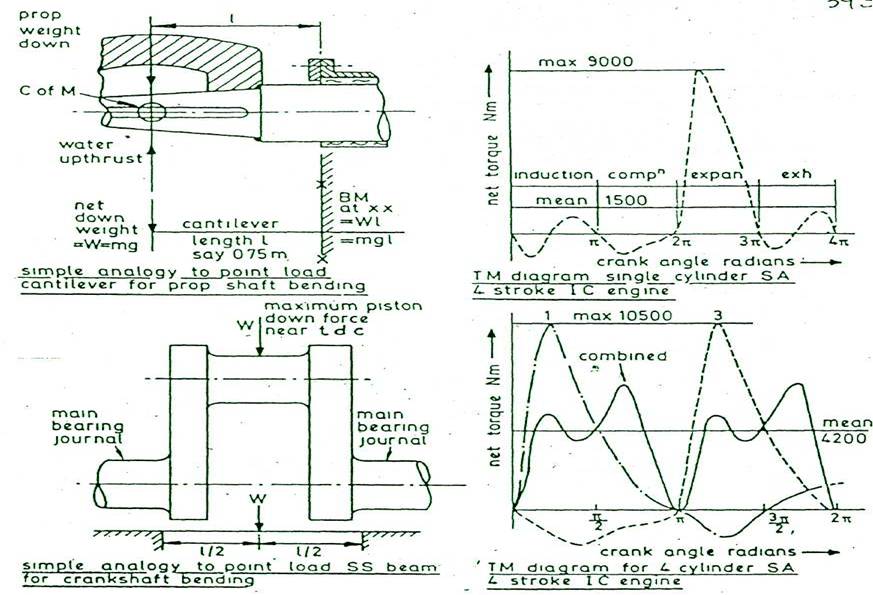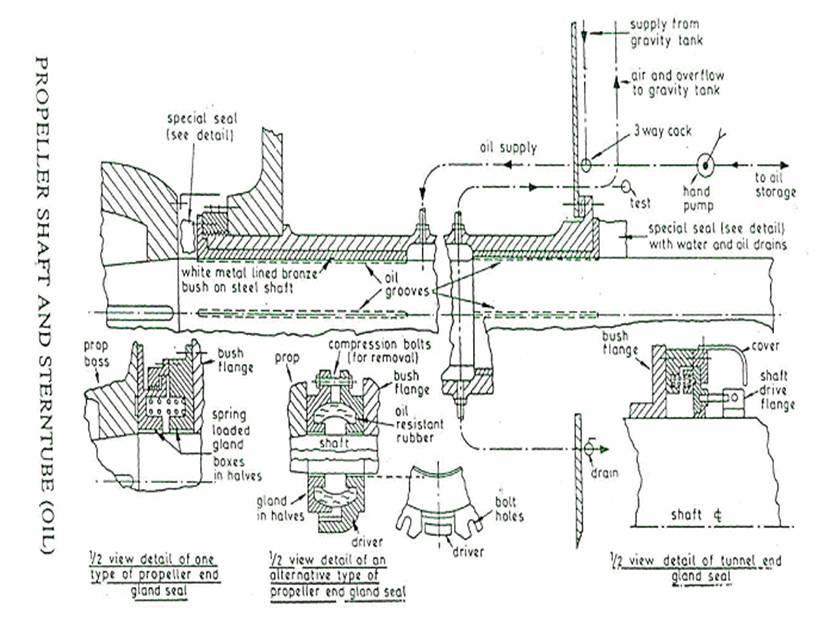SHAFTING STRESSES :
SOLID AND HOLLOW SHAFT -Solid shaft Diameter = D, Hollow shaft Outside diameter = D2 Hollow shaft inside diameter = d2
We have T\J =q\r
Where, T = Torque on shaft, J = Polar second moment of area of shaft, q = Working shear stress maximum, r = Shaft radius.
Strength of solid shaft \ Strength of hollow shaft = Torque Solid (T,) \ Torque hollow (T2) = q,J1r1 \ q2J2r1
For the same working stress,
Strength
Solid \ Strength hollow = J1-
D1
\ J2
- D1 =
![]() D14
\ 32. D1
x
32 . D2
\
D14
\ 32. D1
x
32 . D2
\
![]() (D24
- d24)
(D24
- d24)
= D13 - D2 \ (D24 - d24)
So, Strength Solid \ Strength hollow = 3603 x 380 \ (3804 - 2504) = 1.76 \ 1.66
i.e. approximate the same strength but 40% reduction in weight for the same length. Hollow shafting is however more expensive.
For
solid shaft of 300 mm dia with a flaw detected at 25 mm deep, then
the shaft power which is proportional to torque, T\J = q\r , T = 2 Jq
\ D = 2
![]() D4
.q \ D.32 =
D4
.q \ D.32 =
![]() D3
.q \16
D3
.q \16
Thus Power a Torque a (Diameter)3.
Power reduction for 25 mm flaw,
Reduction ratio = 2503 \ 3002 = 1.56 \ 2.76 power reduction to about 58% of original power.

SHAFTING STRESSES
